 |
 |
 |
 |
 |
 |
 |
 |
 |
 |
 |
 |
 |
 |
 |
 |
 |
 |
 |
 |
 |
 |
 |
 |
 |
 |
 |
 |
 |
 |
 |
 |
 |
 |
 |
 |
 |
 |
 |
 |
 |
 |
 |
 |
 |
 |
 |
 |
 |
 |
 |
 |
 |
 |
 |
 |
 |
 |
 |
 |
 |
 |
 |
 |
 |
 |
|
|
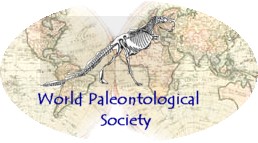 |
|
|
|
Cretaceous Theropods |
|
|
|
|
|
Big and little carnivores. The 'Theropods' were nasty hunters. Both the large Tyrannosaurids and their scaled down cousins, the Raptors, depended on teeth and claws. |
|
|
|
|
Celebrity fossils from the past 4 billion years brought to you by the World Paleontological Society |
|
|
|
|
|
|
18cm |
|
|
 |
|
|
|
|
|
|
 |
|
|
|
Dinosauria
Theropod
Raptor
Dromaeosaurus sp.
Late Cretaceous
Campanian
Oldman Formation
Alberta, Canada |
|
|
|
|
|
|
|
|
7 cm |
|
|
|
|
 |
|
Click to enlarge |
|
|
|
|
|
These are 'Phalanges'...similar to finger joints, The 'claw' phalanx is called an 'Ungual' |
|
|
|
Dinosauria
Theropod
Tyrannosaurus Rex
Teeth
Late Cretaceous
Maastrichten
Alberta, Canada
|
|
|
|
|
|
|
|
|
|
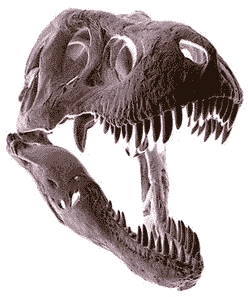 |
|
|
|
|
Click here for enlarged photo |
|
@ J. LeBlanc |
|
|
|
|
|
|
|
|
Tyrannosaurus teeth are the 'real thing'. The exterior tooth material is too dense to be replaced by minerals. Dark colours are mostly the result of heat created by the pressure of deep geologic burial. Erosion removed overlying sediment layers. The infamous serrations were used more as hooks for ripping out chunks of meat than as slicing tools. |
|
|
|
|
|
|
3.5 cm |
|
|
|
 |
|
|
@ J. LeBlanc |
|
|
|
|
|
(9 cm) |
|
|
|
|
|
|
|
|
 |
|
|
|
|
|
Dinosauria
Dromaeosaurus sp.
Jaw Section
Lake Cretaceous
Maastrichten
Montana |
|
@ J. LeBlanc |
|
|
|
|
|
|
|
Theropod unguals 'claws'
Raptor, Dromaeosaurus? (top)
Ornithomimus (bottom) |
|
|
|
|
|
|
@ J. LeBlanc |
|
|
|
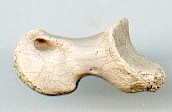 |
|
|
|
4 cm |
|
|
How does the claw work? The raptor phalanx on the right from Dromaeosaurus displays the deep circular curve on both distal and proximal ends. This pivotal motion allowed the claw to swivel as it slashed through its prey. |
|
|
|
|
|
|
|
|
|
|
Digit 2, Phalanx 2, Pes |
|
|
|
|
|
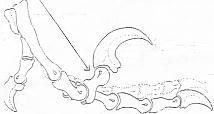 |
|
|
|
|
|
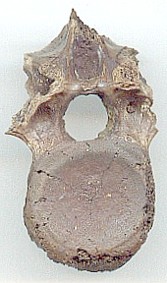 |
|
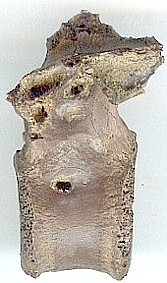 |
|
|
|
Dinosauria
Dromaeosaurus sp.
Vertebra
Oldman Formation
Late Cretaceous
Alberta, Canada
Front and side views |
|
|
|
|
|
|
|
|
|
Return to
Cretaceous Room |
|








